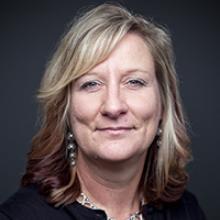Critical Shortages in Special Education Teachers. Sound Familiar?
Teacher shortages may be the most acute problem in special education. For years, states and districts have struggled to find qualified people to teach students with disabilities. In the 2013-14 school year, 47 states reported shortages of special education teachers. Though not a new challenge, its impact has intensified as the number of students receiving special education services has increased over the past two decades.
Part of the problem may be the recent decline in enrollment in all teacher preparation programs. And retaining special education teachers is especially challenging. Often, school administrators say, it’s difficult to keep new special education teachers for more than a few years.
What drives them out? And how can we keep them?
Special education teachers leave for several reasons:
- Isolation and lack of shared ownership. Students with disabilities receive services from a wide range of general and special educators in a wide array of settings. In fact, on any given day, a student with a disability may see a general education teacher, special education teacher, speech therapist, occupational therapist, and behavioral specialist, and the list could go on. At the end of the day, who is responsible for their progress? On average, more than 60 percent of students with disabilities spent more than 80 percent of the school day in general education classes—at times, with their own special education teacher team teaching alongside the classroom teacher. Yet, many special educators say that in this set up, they are often considered “extras”—pushed off to the side and not a real part of the class experience.
- Role ambiguity and less instructional time. Under the Individuals with Disabilities Education Act, each student must have an individualized education program. These documents can run to 75 pages or more. This and other requirements can mean a staggering amount of mandatory paperwork. And special educators also play many roles. They can be co-teachers, resource room teachers, consultants, and classroom teachers—all on the same day. Little wonder that special educators often feel overwhelmed, with little clarity in expectations and shrinking instructional time.
- Lack of leadership support. There is a significant relationship between special education teacher retention and supportive leadership. Special educators say they need more administrative support while school leaders say they’re not trained to support students with disabilities and their teachers. The result? Special educators feel unsupported and leave.
Clearly, simply “fixing” special education won’t keep our special education teachers on the job. For that, we need to create school environments where special educators and their students can thrive. How?
- Forging collaborative partnerships. State education agencies, teacher preparation providers, and school districts can work together to improve all educators’ capacity to support students with disabilities. Several teacher preparation programs keep groups of general education and special education candidates together in classes co-taught by both.
- Creating collaborative school cultures. All educators should have the skills to support inclusive practices for students with disabilities. A collaborative school culture allows general and special educators and leaders to collaborate and problem solve around student needs. This approach can be modeled and implemented by states and districts and within teacher preparation programs.
- Strengthening leadership support. Leaders should learn how to start and maintain inclusive schools and classrooms. Too often, school leaders’ preparation centers on the special education’s legal aspects. But if principals don’t know which type of instruction works best for students with disabilities, how can they be instructional leaders?
One resource available to help bring about this transformation is the Collaboration for Effective Educator Development, Accountability, and Reform Center, or CEEDAR. Funded by the Department of Education’s Office of Special Education Programs and led by the University of Florida, CEEDAR works with state departments of education, teacher preparation programs, and local districts to create policy infrastructure and reform preparation programs that advance education for students with disabilities.
In fact, CEEDAR just released a State Policy Profile Map that provides an overview of various state policies (e.g. certification and licensure standards, program approval, induction, and professional development) that impact teacher and leader preparation in supporting students with disabilities in inclusive environments.
CEEDAR efforts have spotlighted the importance of supporting those who teach students with disabilities. But creating partnerships, promoting collaboration, and strengthening school leader’s skills will help all teachers and improve education for all students.
Lynn Holdheide is a former special education teacher and current AIR project manager for the CEEDAR Center, which is led by the University of Florida. She is also Co-Deputy Director for the Center on Great Teachers and Leaders and a technical assistance facilitator for the National Center for Systemic Improvement.
Jenny DeMonte is an AIR senior technical assistance consultant specializing in teacher preparation and licensure. She has worked on research and policy issues related to teacher quality and school improvement—first as a journalist and now as a researcher—for more than 20 years.
